African tribal women are a great force to reckon with all over the world as they are a major pillar holding the fabrics of history and African cultural practices. They have transcended the back view of the African desert into the cold region of the west, exporting African values and traditions.
There is no doubt that cultural traditions, values, and ethics are the strongest pillars of every society. Africa accounts for about 16% of the world’s population which translates to over 1.3 million people from more than 3000 tribes. The continent’s unique cultural practices through music, art, and dance always live foreigners in awe, and African tribal women are at the forefront of these practices.
The age-long traditions of African tribal women have shaped the way of life of generations of people of African extraction and have been passed down over centuries. They range from skin beautification by the Himba tribe to lip adornment by the Mursi tribe. However, some of these practices have been frowned at in this era of civilization. From the strange to the appealing, these are some of the fascinating ways of life peculiar to African tribal women.
Exploring Fascinating Facts About African Tribal Women and Their Cultures
10. Breast Ironing Practice
This cultural practice is otherwise known as breast flattening. Its a culture deployed by ancient African tribal women as a way to preserve their girl child for a career before marriage. Most men consider a lady who develops breasts early as ripe for sex and marriage. As such, mothers pay close attention to their daughter’s maturity level and immediately try to stop the process.
They use objects such as a stone, hammer, umbilical belt, pestle, and even heated items to achieve this. The process is usually very painful and the girl is often held down by stronger hands for it to be performed. With these measures, men find teenage girls unattractive and unripe.
Though this process is very painful and unhealthy, they have managed to reduce the rate of teenage pregnancy and marriage in Africa. However, other claims suggest that this practice was introduced to reduce the rate of breast cancer and aid the production of breast milk.
9. A Village Where Only Women Live
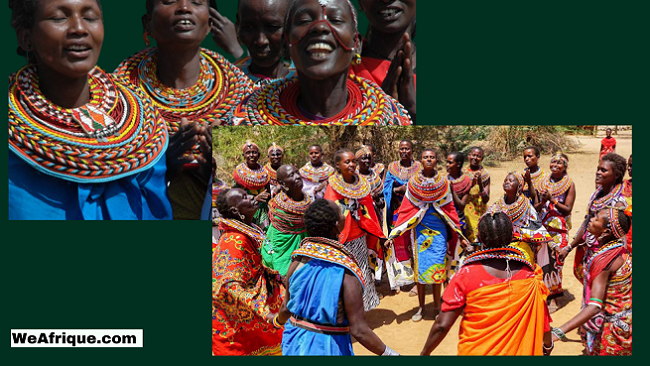
Over the last five centuries, the Samburu people of Kenya suffered from gender inequality and the most affected were the women. Women who were considered weaker were subjected to injustices and a village emerged to serve as a refuge for women fleeing sexual abuse: men are banned from the village.
Several reports have traced the emergence of the village to 1990 and Rebeca Lolosoli. It is said that she founded the village called Umoja where only women would live and freely so. Umoja means unity in Swahili and the village has gained the attention of many people across the globe for being a haven for women who have suffered injustice.
Located in Samburu County, Kenya, many women have taken refuge in Umoja and have united with other women living there to protect the land from men against all odds. Umoja village still stands to this day and is free from men. The women are not just independent but have become a great force to be reckoned with as they choose not to be oppressed.
As a man, you can visit the village but it is forbidden for you to live there. From what we gathered, only male children born and raised in the village can spend a night there.
8. Potency Testing of Bridegrooms Before Marriage By Banyankole Aunts In Uganda
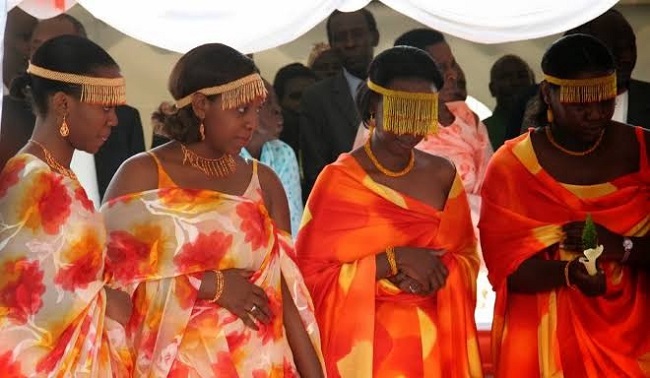
You wouldn’t search hard to find that the Banyankole tribe also known as the Nkole people are native to Uganda. They are a Bantu ethnic group mostly found in Ankole. Like every other tribe in Africa, they have traditions and cultures that are peculiar to them. It is hard for sociologists to discuss African tribal women and their ways of life without exploring the potency testing of bridegrooms by Banyankole aunts.
Although things might have changed now, there was a time when this tribe takes potency tests before marriage so seriously that the bride’s aunties are obligated to have sexual encounters with the groom to authenticate his potency. Apart from having sexual intercourse with the groom, they watch the new couple consummate their union and counsel their nieces to prepare them for possible challenges.
7. Presentation of Wives to Visitors For Hospitality
A well-prepared meal is not enough to show hospitality to a visitor spending a whole night. The men of Ovahimba and Ovazimba tribes show their pleasure of seeing guests by giving the Okujepisa Omukazendu treatment.
His wife is expected to spend the night in a different room with the visitor. In the case where no separate room is available, her husband sleeps outside. However, she is left to decide what happens inside the room.
See Also: South African Names – 150 Popular South African Names And Meanings
6. African Tribal Women and The “Money Marriage” Tradition In Nigeria
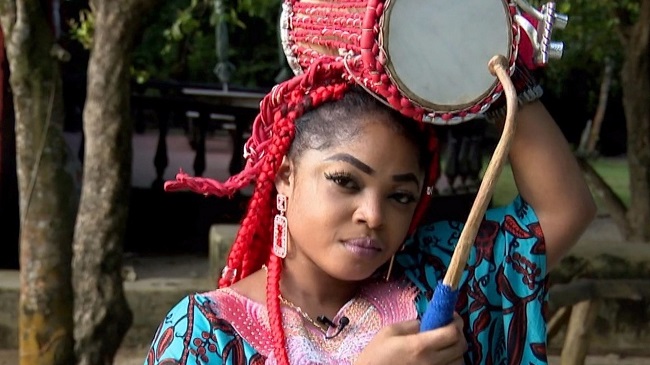
Among several ways money can be earned, the people of Becheve in Nigeria, West Africa, use their daughters as baits to earn money. Daughters from the age of six are used to settle debts, play bets, settle hospital bills, and can even be given out for an amount of money as low as N3500.
When she reaches 10 years old, she is considered ripe for marriage and allowed to bring a man to the house who is considered her customer. She is also allowed to have sex with her supposed customer even when married but not on the matrimony bed.
5. The Otjiz Mixture of The Himba Tribe
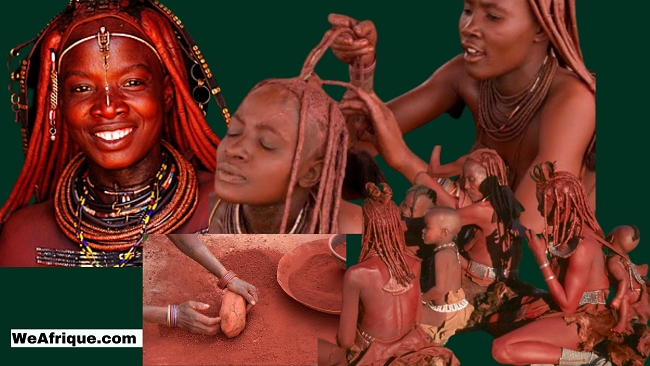
The Himba tribe has age-long beauty procedures passed unto them by their ancestors and are mostly recognized for their red-hued skin. This is achieved by the application of the Otjiz mixture, made of ochre powder and animal fat.
The Himba women recognize red color to reflect beauty. Moreso, this mixture provides moisture for their skin and protects them from harsh weather conditions. Also, this practice is a way of cleaning their skin to achieve healthy, soft, and smooth skin.
That’s not all; it is also said that the mixture is used for cleansing rather than bathing to minimize the use of water.
4. Virginity Testing of The Read Dance (Umhlanga/Umkhosi woMhlanga) Ceremony In Southern Africa
The Umhlanga ritual is an important aspect of the reed ceremony among the Zulu tribe. As a condition set for any girl who wants to participate in the dance, her virginity must be tested to determine if her hymen is still intact.
While others may find this practice degrading, the tribal women respect this as a cultural practice. Some girls who have participated reportedly said it defines them as women of integrity.
Several attempts have been made to abolish this practice over the years but traditionalists value it as part of their culture and continue to protect it. Reports have it that the practice was reintroduced in 1991 by King Goodwill Zwelethini, the late King of the Zulu nation to encourage abstinence from sex and curtail the spread of sexually transmitted infections.
3. The Wife Stealing Night Dance
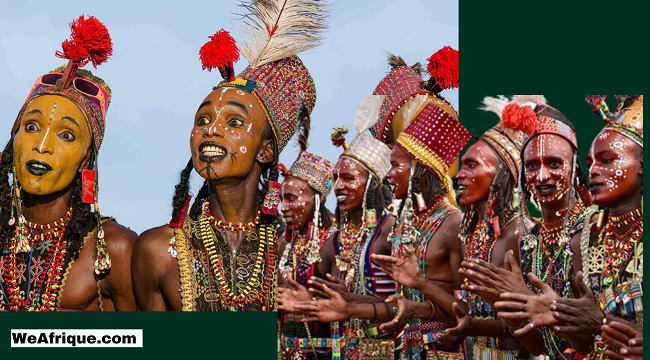
The Gerewol annual festival is a practice among the Wodaabe tribe, a Fulani tribe in Niger, West Africa. The men of Wodaabe wear make-up and hold a beauty pageant mostly done to impress other women. The contestants are given six hours to get ready and show what they’ve got through dancing.
They paint their faces with red clay, their eyes with white liner, and wear a shade of lipstick that makes their teeth appear whiter. Also, ostrich feathers are used to decorate their hair for a taller look.
Three of the most beautiful women are selected as judges. However, it doesn’t just end at dancing as these men can steal other men’s wives during the festival. This practice is widely accepted and men who do not want their wives to be stolen do not participate in the festival.
2. Lip Plates Worn by Africa Tribal Women to Reflect Perseverance and Bravery
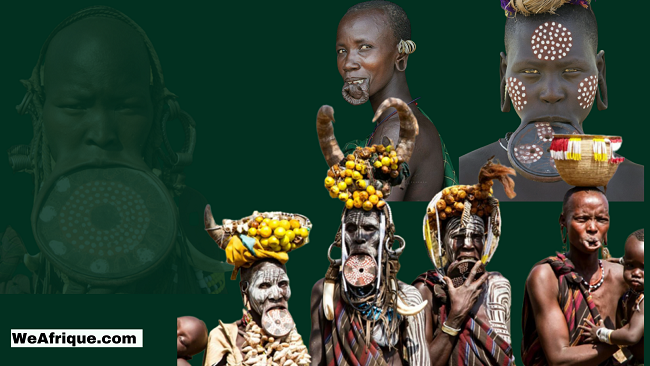
African cultural practices convey deep meaning peculiar to different regions. While some women prefer to adorn themselves with golden apparel, the Mursi tribe of Ethiopia do theirs with a large pottery plate.
A Mursi girl’s lower lip is cut by her mother or an older woman as she turns 15 years old. The cut is held open using a wooden plug for at least three months and then a wooden plate planted into it. When the wound heals completely and the lip is stretched, the wooden plate is removed.
Other tribes have practiced this tradition in the past including Sudan, South America, and Ecuador. It is said to symbolize beauty while reflecting respect and commitment to the husband. Moreso, it captures the status of women in society as the plate is permanently removed when her husband dies.
1. African Tribal Women Practice Genital Mutilation to Reduce Sexual Desires
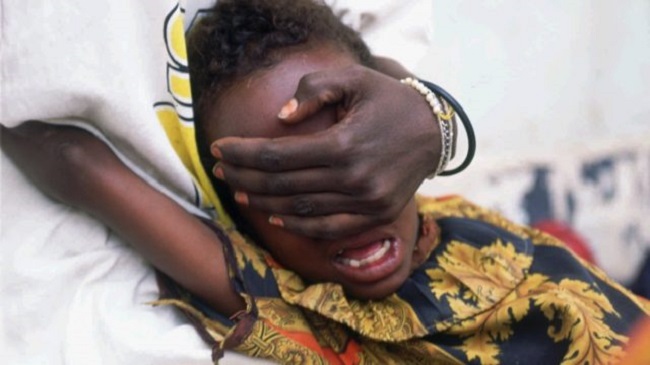
This practice is common in over 28 African countries, including Nigeria, Egypt, Mali, Eritrea, Sudan, the Central Africa Republic, and the northern part of Ghana.
Gishiri cutting is mostly common among the Hausa and Fulani communities. It is seen as a way to curb promiscuity while promoting chastity and modesty. Also, other parts of Africa practice it as a form of initiation into womanhood. This usually involves the insertion of a knife into the vagina and making a downwards cut to the perineum.
African tribal women have indeed embraced some of these age-long cultures to help mold the girl child. However, practices like female gender mutilation inflicts pain, expose one to health problems, and in serious cases, death. Though campaigns for the abolishment of this practice have taken full force, some African tribal women hold on to its perceived advantages and continue to subject their daughters to this practice.










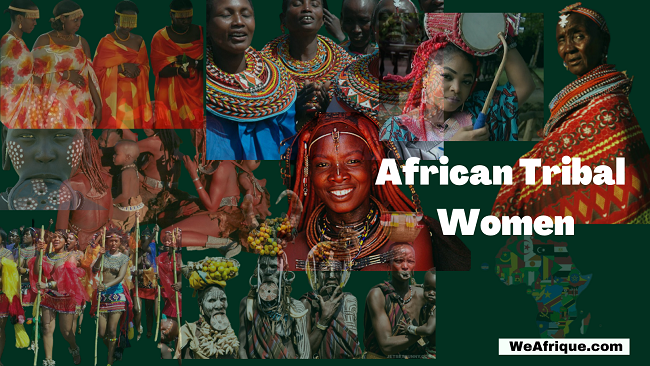










Discussion about this post